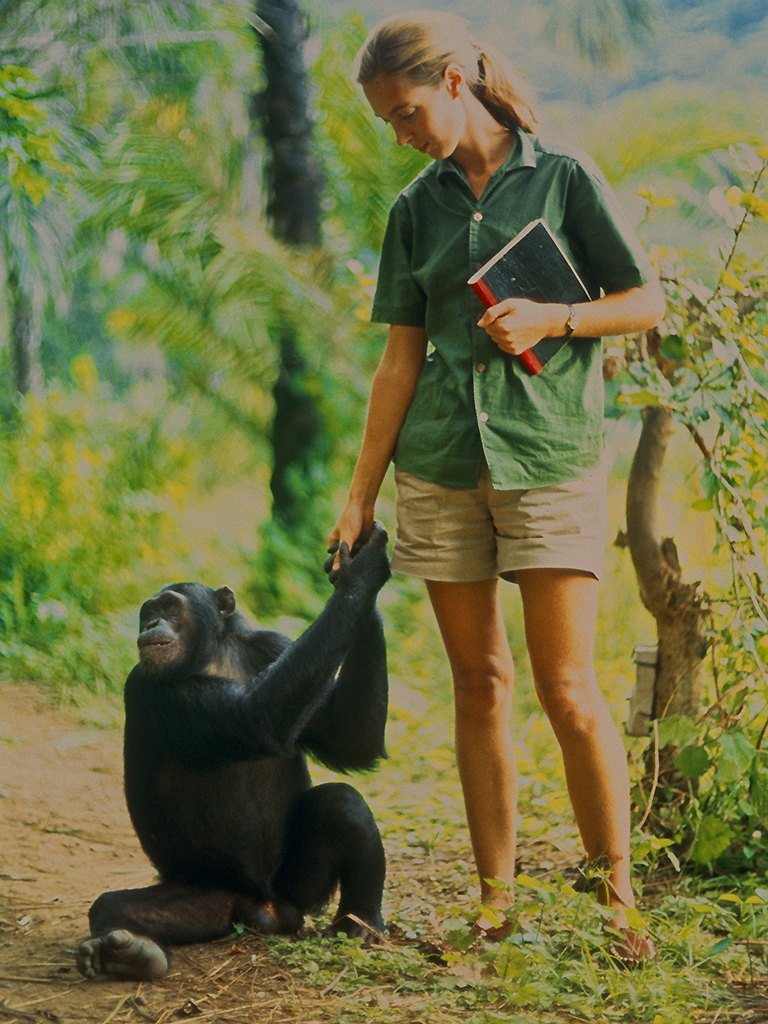It’s not hyperbolic to say Jane Goodall is one of the most influential, inspiring people to ever walk the planet.

At the ridiculously young age of 26, Goodall was dispatched to the Gombe Stream National Park in present-day Tanzania to study chimpanzees in 1960. It was the first-ever study of the chimps in their natural environment, and Goodall has continued her in-depth focus on the primates for more than 55 years. Now 83, she’s considered the most knowledgeable chimp expert alive.
National Geographic and director Brett Morgen have captured Goodall’s story in Jane, a feature-length documentary with never-before-seen footage that’s been tucked away in National Geographic’s archives for half a century.
READ MORE: Ellen Pompeo denies accusations her $20M ‘Grey’s Anatomy’ paycheque led to costars’ firings
Goodall’s emergence and growth as a respected scientist — especially as a woman — is expertly depicted in Morgen’s doc. Her chimp research challenged the male-dominated scientific consensus of the time and revolutionized how humans look at the natural world.
We watched Jane in amazement, and the time flew by. Here are five amazing things about the documentary.
Goodall walked into that jungle and never gave up on her goal.
Conceive of the idea that Goodall wandered into the untouched African wilderness to study a creature that had never been studied before. The fact that she did it in the ’60s, when attitudes against women were even more restrictive than they are today, makes her work even more impressive. (She brought her mother along with her on the journey.)
She slowly introduced herself to the Gombe chimps, day by day, until they got used to the strange white-skinned primate in their midst. After an initial volatile period when the chimps would ransack the scientist’s camp for food — they’d inadvertently left out a banana on one occasion, and the chimps regularly started visiting the camp for more — they slowly began to accept her after five months. In Jane, we witness one of the first moments when Goodall touches a chimp, and it is at once heart-pounding and beautiful.
The footage is top-rate.
Once thought to be lost, National Geographic’s footage is remarkable on every level. Despite its age, the imagery is clear and it’s crisp enough to measure the expression on the many chimps’ faces. You’ll get to know the various chimps by name, and perhaps even on-sight.
Truly, Goodall seems so at-home in Gombe it’s a wonder she ever left. Her “vibe,” for lack of a better word, is so calm and so unobtrusive, like she was meant to be there in the trees.
READ MORE: Colin Firth’s wife admits to having affair with couple’s alleged stalker
The intricacy of Goodall’s notebooks is stunning.
Think you know somebody who keeps intricate, ridiculously perfect notes and logbooks? Well, that person has nothing on Goodall. In some clips in Jane, we get a firsthand glimpse of her notes, which contain countless graphs and lists of the chimps’ comings and goings. Sure to be worth a mint someday, Goodall’s research notes laid the groundwork for all future study of primates, and indeed, any species analysis.
Romance blooms in the jungle.
If you already know about Goodall’s personal life, you’ll know that she met her first husband in Gombe. Assigned to be her photographer for the study, renowned nature photographer Hugo van Lawick moved to Africa to work on the assignment in 1962. Initially, the pair had to acclimatize themselves to each other, but over time they fell in love and eventually got married. They had one son, affectionately known as “Grub.”
You may find yourself getting attached to the chimps.
Goodall eventually named all the chimps she encountered in Gombe. Not only did it help her with her research, but it brought her closer to them. Her favourite chimp, David Greybeard — so named for his silver facial hair — was the first one she witnessed using tools and eating meat. He also helped Goodall by bringing other chimps with him when they first started coming to the scientists’ camp.
Jane viewers will be hard-pressed not to become attached to Flo, a notched-ear female who taught Goodall a lot about chimp mothering and their relationship with infants. Flo died while crossing a stream in 1972, and Goodall said she cried when she heard the news.
READ MORE: Mark Salling’s ex-girlfriend sues his estate for $2.7M settlement
It can be jarring watching chimps and other primates and seeing how similar they are to humans (technically, we share 98 per cent of the same genes). That’s part of the reason Goodall’s research is so important; we may never have known just how much like us they are without her work.
‘Jane’ has its Canadian broadcast premiere on March 12 at 10 p.m. ET/PT on National Geographic.







Comments